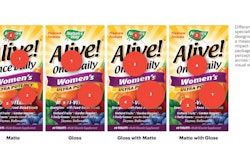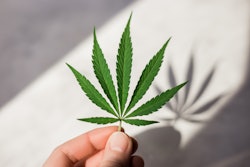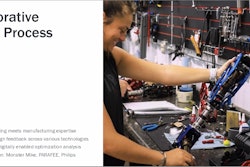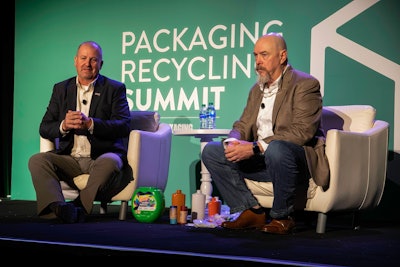
Over the last three decades, Consumer Packaged Goods brands have been exploring a number of strategies to minimize the environmental impact of their packaging. Recently, these brands, their suppliers, and environmental organizations have begun to coalesce around a singular approach: a circular model, where the focus is on keeping existing materials in use for as long as possible.
Considering that recycling, by definition, transforms waste into reusable materials, and that theoretically, all packaging can be recycled, you might expect the industry to be well on its way toward a fully circular economy. However, in looking at the dismal rates of package recycling in the U.S.—for example, the plastics recycling rate is just 9%—the desperate appeal from suppliers and brands for more recycled content, and the packaging waste littering the environment, that’s clearly not the case.
A primary cause is the lack of communication and collaboration among the stakeholders—the suppliers that produce the packaging, the brands that use it, the consumers who dispose of it, the material recycling facilities (MRFs) that collect and sort the waste, and the reprocessors who turn the waste into new materials.
 At PRS23, Chris Max of Kraft Heinz told the audience that the industry is at ‘the tipping point, that magic moment when an idea or social behavior crosses a threshold and spreads like wildfire.’
At PRS23, Chris Max of Kraft Heinz told the audience that the industry is at ‘the tipping point, that magic moment when an idea or social behavior crosses a threshold and spreads like wildfire.’
Despite the significant challenges to recycling, attendees at PRS23 were energized. Said Chris Max, research lead - packaging sustainability for Kraft Heinz, “I think we’re at the tipping point, that magic moment when an idea or social behavior crosses a threshold and spreads like wildfire. We need to take advantage of this moment. We’re all here for a reason—people care. We just need to do a better job and collaborate to increase recycling rates.”
Understanding the business of MRFs
In the lead up to PRS23, Myles Cohen, founder of Circular Ventures, LLC, and former president of Pratt Recycling and Sonoco Recycling, validated the disconnect between CPGs and MRFs, saying, “MRFs don’t often have the ear of brands.” At the conference, Cohen, along with a panel representing MRFs and reprocessors, had both the ears and eyes of brands during a discussion that pulled back the curtain on the business of MRFs. Indeed, one of the main messages was that, contrary to a common perception that MRFs operate from altruistic motives, material recycling is a business.
“MRFs want to make money, they’re part of the capitalist system,” said Cohen. “If they don’t make money, they’ll go out of business.”
One of the biggest barriers to MRFs’ success, however, is contamination. Said Jeff Snyder, director of recycling for Rumpke Waste & Recycling, of the 30,000 tons of single-stream materials processed by the MRF each month, 15% to 20% is contamination. Of that, 2% consists of recyclable materials that aren’t recovered due to the sortation process, and the rest results from consumers “wish-cycling”—or putting packages in the recycling bin and hoping the MRF will deal with them—as well as brands designing packaging that is technically, but not practically, recyclable. When there’s too much contamination in a bale, for example, too many shrink-sleeve labels in a bale of aluminum, the MRF’s customer, in this case, an aluminum smelter, will reject it. Extensive contamination in MRFs has also led to cities shutting down their recycling programs.
 From l. to r., members of ‘The Business of MRFs’ panel included Jeff Snyder of Rumpke, Jane Fridely De Bigit of Myplas, Myles Cohen of Circular Ventures, and Peter Adrian of SWALCO.
From l. to r., members of ‘The Business of MRFs’ panel included Jeff Snyder of Rumpke, Jane Fridely De Bigit of Myplas, Myles Cohen of Circular Ventures, and Peter Adrian of SWALCO.
The current mix of materials in most recycling streams favors fiber, primarily old corrugated containers (OCC), at 55% to 58%, with the majority coming from commercial customers. Other materials in the mix include aluminum, PET (plastic #1), high-density polyethylene bottles and jugs (#2), cartons, and more recently, polypropylene tubs (#5). These materials are considered “widely recyclable,” meaning 60% or more of U.S. households have access to recycling for these packages. But the most recent recycling rates recorded for these materials are low, and most have remained flat for years: from 40% to 68.2% (depending on the source) for fiber, 45.2% for aluminum, 28.9% for HDPE, 29% for PET, 20% for cartons, and 15.4% for PP.
“Seventy percent of the ones, twos, and fives in the U.S. go to landfills today, and we want them all day long; I have an end-user network that will buy them and turn them back into products,” said Snyder.
 Source: Jeff Snyder, Rumpke
Source: Jeff Snyder, Rumpke
But there is reason to be optimistic. Snyder shared that emerging technology for MRFs—including AI [artificial intelligence, IR [infrared optics], and anti-wrapping shafts for flexible film—are enabling more accurate sorting along with sortation of a greater range of materials.
“If someone had told me five years ago I was going to be collecting polypropylene tubs, I would have said no way, but here we are, and we want them all day long. We’ve got a great market for them, and we can effectively sort them,” he said. “So the technology is definitely out there, and it’s awesome.”
Strategies for designing packaging for recycling
While the list of materials accepted by the majority of MRFs seems fairly clear-cut, material type is just one consideration. According to Kelly Murosky, sustainable packaging manager for Unilever, “you have to look at the entire packaging system to determine recyclability.”
 Kelly Murosky of Unilever advises that brands need to look at the entire packaging system to determine recyclability.
Kelly Murosky of Unilever advises that brands need to look at the entire packaging system to determine recyclability.
In auditing its portfolio, Unilever learned how factors such as inks, labels, and adhesives can affect the recyclability of PET bottles. If a label is too large, a MRF’s NIR [near infrared] sorters will identify it by the plastic the label is made from, rather than the bottle material. To ensure the bottle is sorted as PET, label coverage must be less than 55% of the surface area of a container (for bottles less than 550 mL). Another guideline for labels: Avoid PVC and paper, which can cause black flakes in rPET.
 A number of elements of a package, including labels, printing inks, adhesives, etc., can determine if it is recyclable.
A number of elements of a package, including labels, printing inks, adhesives, etc., can determine if it is recyclable.
“What it really comes down to is, think about your labels and make sure they’re not affecting the sorting and recycling process,” said Murosky. “There’s no such thing as a recyclable material, only a recyclable design.”
Another tool in the design for recyclability toolbox is collaboration with MRFs, a topic that was discussed in a presentation from Mark Agerton, group scientist – Hair Care Packaging Platform for Procter & Gamble, and Rumpke’s Snyder. Agerton shared how P&G routinely works with MRFs to gather insights during the design process for a new package, as well as conducts real-world tests in their facilities to understand how the packaging moves through the sorting process. P&G has tested both new packaging formats, as well as harder-to-recycle packaging to drive end markets for the materials.
 From l. to r., Jeff Snyder of Rumpke and Mark Agerton of P&G discuss how P&G has worked with the MRF when designing packaging to ensure it will make it through the recycler’s sorting system.
From l. to r., Jeff Snyder of Rumpke and Mark Agerton of P&G discuss how P&G has worked with the MRF when designing packaging to ensure it will make it through the recycler’s sorting system.
In another example, P&G worked with Rumpke, Clean Tech Recycling, and Penn Color to increase the collection of colored PET containers, such as its green Gain and orange Tide PET laundry detergent packaging, to drive greater availability of rPET for its white Pantene shampoo bottle. As a result, P&G is now able to produce its Pantene bottle with 25% PCR. “So as we start looking at the recycling infrastructure, certainly there are already a lot of operations on the mechanical side,” said Agerton. “But if we don’t innovate as we move forward, we will just continue to collect clear PET and natural HDPE as the most valuable materials.”
Collaboration drives recycling for new materials, formats
The theme of collaboration, such P&G’s partnership with MRFs, pervaded nearly every session in the PRS2023 program. In fact, “collaboration” was mentioned no fewer 60 times and “partner/partnerships” nearly 80 times. Many of the examples involved partnerships created to drive collection, recycling, and reuse of hard-to-recycle materials.
Among them was the Carton Council’s efforts to divert cartons, both gabletop and aseptic, from U.S. landfills. The council was formed in 2009 by carton manufacturers Tetra Pak, Elopak, SIG, and Pactiv Evergreen with the goal to expand access and increase participation in carton recycling. That’s according to Larine Urbina, vice president of communications for both Tetra Pak, U.S. and Canada, and the Carton Council, who explained that the council worked across the value chain to achieve its goals.
 Jason Pelz, of Tetra Pak, and Larine Urbina, of Tetra Pak and the Carton Council, discuss the Carton Council’s success at increasing the collection and recycling of cartons.
Jason Pelz, of Tetra Pak, and Larine Urbina, of Tetra Pak and the Carton Council, discuss the Carton Council’s success at increasing the collection and recycling of cartons.
Through its efforts, the council expanded access to carton recycling from 18% of U.S. households in 2009 to 62% in 2023. Likewise, the recycling rate for cartons has also significantly improved—from 6% to 20% in the same time frame.
Another example of collaboration is the small-format coalition, which was created in 2022 by The Sustainability Consortium together with a collection of brands—among them Colgate-Palmolive, P&G, the Esteé Lauder Companies, L’Oréal, and Haleon—as well as MRFs, non-profits, and universities. The goal of the coalition is to determine the feasibility of enabling small-format curbside recycling. Currently, small-format packaging (items measuring less than 2 in. in at least two dimensions) is not recyclable due its size; at a MRF, one of the first steps in the sorting process involves a glass breaker screen, which is essentially a mesh screen that allows shattered glass to slip though into a glass stream. Due to its size, small-format packaging drops out during glass sorting and contaminates the stream.
For the coalition’s purposes, small-format encompasses both packaging, e.g., caps, lip balm tubes, personal care sample packs, etc., as well as small-format items such as toothbrushes and disposable razors.
 From l. to r., Alexis Hocken of MIT and Jennifer Park of The Sustainability Coalition were joined on stage by Ana Espinosa of Esteé Lauder to discuss small-format packaging.
From l. to r., Alexis Hocken of MIT and Jennifer Park of The Sustainability Coalition were joined on stage by Ana Espinosa of Esteé Lauder to discuss small-format packaging.
The first phase of the project involved gathering data through traditional waste characterization studies as well as data modeling and analysis to build a business case for small-format recycling. The results indicated that an estimated 25% to 40% of plastic packaging is small format by number of items, and 5% to 10% of plastic packaging is small format by weight. “That’s a significant amount of material,” said Jennifer Park, director of engagement for TSC. “Within the last number, we estimate that anywhere from 0.8 to 1.6 million tons of small-format packaging is produced each year.”
While the consortium continues its data collection, including auditing how much small-format packaging is ending up in the glass stream, it’s also working with MIT, specifically a team led by MIT ChemE NSF Graduate Research Fellow Alexis Hocken, to look at potential technological solutions that could be implemented at the MRF level. Hocken’s proposed solution is to create a second screening process for broken glass that uses cyclone separation technology.
“So basically, any of the material that falls through the glass breaker screen would then be fed into this secondary screening,” she explained. The cyclone process would separate the materials by density and would result in two “theoretically pure” outlet streams: a plastic outlet and a glass outlet. The ultimate goal would be to refeed the plastic outlet back into the main conveyor belts that lead to optical sorters so they can be further sorted by resin type.
 Pilot technology developed by MIT ChemE NSF Graduate Research Fellow Alexis Hocken uses a cyclone process to separate glass and small-format packaging during the MRF sortation process.
Pilot technology developed by MIT ChemE NSF Graduate Research Fellow Alexis Hocken uses a cyclone process to separate glass and small-format packaging during the MRF sortation process.
To determine the environmental benefits of such a system for a MRF, Hocken performed a life-cycle assessment. The result showed that the addition of cyclone separation for small-format packaging can provide MRFs with an additional savings from 132,000 to 1.25 million kg of CO2 equivalent each year. A techno-economic analysis (TEA) showed that in all scenarios, the cyclone is economically beneficial.
Strategies to increase film recycling
One package type that checks off the majority of low-CO2-footprint boxes but has been vilified for its lack of recyclability is multi-material flexible packaging. To tackle this issue, in recent years brands have been innovating to create barrier packaging that uses a single material, making it eligible for store drop-off recycling. According to General Mills R&D Principal Engineer Patrick Keenan, by designing more packaging for store drop-off, CPGs can drive curbside recycling of flexible film. (As noted, MRFs don’t want this material, as it gums up the works.)
 Patrick Keenan of General Mills explains how brands can drive MRF investment to handle curbside recycling of flexible film by building critical mass through more packaging designed for store drop-off.
Patrick Keenan of General Mills explains how brands can drive MRF investment to handle curbside recycling of flexible film by building critical mass through more packaging designed for store drop-off.
Currently, consumers have significant access to store-drop off recycling; there are 18,000-plus drop-off bins in the U.S., located in grocers and large retailers. These systems accept plastic bags, wrap, and film made from a single material, 99% of which is low-density PE, for recycling. Access to these bins is widespread as well, with 72% of the U.S. population living within five miles of a drop-off location. Most of the material is downcycled by composite decking brand Trex for use in its products.
According to Keenan, despite the extensive availability of store drop-off and despite the fact that 52% of consumers are aware of the option, just a small fraction of the 11% of monolayer flexible film collected today is from store drop-off. The majority comes from commercial recycling, such as back-of-house pallet wrap and shrink film, agricultural film, boat wrap, etc. On the bright side, he noted, the percentage of film that’s being recycled is growing.
 In 2021, General Mills launched a new wrap for its Nature Valley Granola Bar that uses a mono-material film, making it store drop-off recyclable.
In 2021, General Mills launched a new wrap for its Nature Valley Granola Bar that uses a mono-material film, making it store drop-off recyclable.
Said Keenan, “What’s really cool about this is that our brand really thought about the data, saying, ‘Okay, we need to move to polyethylene. It’s the only film that’s being recycled today, so let’s target something that’s actually being recycled. And then let’s explain the [store drop-off] program to consumers, so they’re aware it exists, and they know how to use it.”
 | Learn how General Mills designed a recyclable, mono-material film wrap for its Nature Valley granola bars. |
“We don’t believe store drop-off is the end state,” he added. “We see it more as a step along the journey to get to widely recyclable. We know our consumers want curbside, but flexible film is not there yet. We see store drop-off as a signal [to brands]—you need to design your film better for the end markets so we can create enough critical mass so there’s value in collecting this material at a MRF.”
Until single-stream curbside recycling of flexible packaging does become available to consumers, Jeff Snyder of Rumpke shared in his presentation that in late November, Rumpke rolled out an intermediate step to collect the material. Through the Hefty ReNew program, developed in collaboration with Dow, Rumpke’s Cincinnati customers—both household and commercial—can purchase orange bags into which they can place hard-to-recycle packaging, such as candy wrappers, snack bags, salad bags, and plastic bags, along with packing products like bubble wrap and foam peanuts. At Rumpke’s sorting center, operators pull the bags from the line in the presort stage, bale the material inside the bag, and ship it to end users.
Said Snyder, “We don’t want film in the MRFs, but if we can get it all in one bag, that is acceptable.”
 Speakers representing the MBOLD coalition included (l. to r.) Apurva Shah of Charter Next Generation, JoAnne Berkenkamp of MBOLD, Andrew Pieterse of Myplas, and Julie Simonson of Schwan’s Company.
Speakers representing the MBOLD coalition included (l. to r.) Apurva Shah of Charter Next Generation, JoAnne Berkenkamp of MBOLD, Andrew Pieterse of Myplas, and Julie Simonson of Schwan’s Company.
Partners in the project include the state of Minnesota, brand owners/retailers Cargill, EcoLab, General Mills, Schwans’ Company, and Target, and film converter Charter Next Generation, among others. Together, the partners have made a joint $9.2 million equity investment in Myplas for a new mechanical film recycling plant in Minnesota, which opened in December.
 | Read this comprehensive article on the MBOLD initiative, “Approaching a ‘Holy Grail’ of Food-Grade, Film-to-Film Recycling?” |
Shared JoAnne Berkenkamp, managing director of MBOLD, “Through Myplas’ new facility, we will help drive a new regional circular economy, giving Midwest film users new opportunities to have their material recycled close to home and increase the supply of recycled resins.”
On-pack labeling reduces consumer confusion
One segment of the circular value chain that has been notoriously difficult to activate is the consumer. Whether it’s the result of confusion, apathy, or other factors, a 12% to 16% residential recycling rate for most municipalities is about as good as it gets. That’s according to Myles Cohen of Circular Ventures, who noted that more common is a 9% to 10% recycling rate. Yet collection is one of the most important pieces of the circularity puzzle.
According to Gracy Wingkono, principal scientist for The Coca-Cola Company, in a session on the future of recycling, “collection is critical for the circular economy to be a functioning system, rather than an ideal.”
One organization that has spent considerable time trying to understand how to motivate consumers is The Recycling Partnership. TRP is a non-profit with more than 80 partners dedicated to improving the recycling system through data, people, and solutions. For the “people” part, Katherine Huded, vice president, Recycling Solutions, for The Recycling Partnership, said that reducing friction along with providing outreach and education are key to engaging consumers.
 Katherine Huded of The Recycling Partnership shares insight gleaned from consumer studies on recycling.
Katherine Huded of The Recycling Partnership shares insight gleaned from consumer studies on recycling.
To get more of the remaining 425 lb requires consumer education to reduce confusion. Given there are 9,000 local recycling systems across the country serving more than 30,000 communities, with recycling rules varying across municipalities, it’s no surprise consumers are confused.
 Discussing dynamic labeling were (l. to r.) Pat Keenan of General Mills, Katherine Huded of TRP, and Paul Nowak of GreenBlue.
Discussing dynamic labeling were (l. to r.) Pat Keenan of General Mills, Katherine Huded of TRP, and Paul Nowak of GreenBlue.
According to Nowak, How2Recycle is now the most recognized label for recycling and is being used by more than 740 brands on more than 200,000 SKUs. He emphasized that the label is not the chasing arrows, although it uses the chasing arrows symbol because it’s widely recognized by consumers. Rather, How2Recycle is a messaging hierarchy based on science and applicable law, per the FDA’s Green Guides for the use of environmental marketing claims.
In May 2023, TRP launched a separate on-pack labeling platform, Recycle Check, which features a QR code that consumers can use to access real-time, localized recycling information for the specific package. Through dynamic labeling, the QR code can remain the same, while the information can be changed based on new data. The label is being driven by TRP’s extensive and frequently updated database of local recycling systems across the country.
 | Learn more about the Recycle Check label in this article, “Database-Backed QR Codes Minimize Recycling Confusion” |
General Mills is the first brand to pilot the use of Recycle Check, adding it to its Pillsbury pie crust packaging in the lead up to the holidays. “Our consumers want to understand what to do with their packaging at the end of life, and we want to make it as easy as possible for them,” said General Mills’ Keenan. “The How2Recycle label continues to be great for kind of the binary state, where a package is widely recyclable. But for check locally, we want to be able to give a tool to our consumers that makes it easier to find out if they can recycle it in their community.”
 General Mills is the first company to pilot the Recycle Check label, along with the How2Recycle label.
General Mills is the first company to pilot the Recycle Check label, along with the How2Recycle label.
In creating the platform, TRP partnered with GreenBlue to learn how the two systems can work together, leveraging TRP’s extensive database and GreenBlue’s expertise in labeling hierarchy. Will this mean a change in the appearance of the labels in the future? Probably. But the process will be deliberate and iterative. “For this to work, we’re going to have to pull together on those changes,” said Nowak. “You won’t love all of them as they come through … there will be some tears. That’s not purposeful. But for us to get to a future state that’s sustainable in your world of print and packaging, we have to look at this.”
Insights on the future of recycling
While the majority of PRS23 focused on mechanical recycling, there are other technologies poised to play a role in the future of recycling. Most notably are organics recycling, or composting, and advanced—otherwise known as chemical or molecular—recycling.
 PMMI’s Rebecca Marquez shared results from a study on CPG’s insights on future trends in material usage.
PMMI’s Rebecca Marquez shared results from a study on CPG’s insights on future trends in material usage.
 | Read more about PMMI and AMERIPEN’s “2023 Compass” packaging materials study. |
If this prediction is true, industry will need to fast-track R&D on compostable packaging, as well as investments in composting infrastructure. Playing its part is Clemson University in South Carolina. Through its FRESH food, packaging, and sustainability institute, Clemson has launched a compostable research initiative to serve commercially compostable packaging producers’ testing needs, merging the school’s R&D capabilities with a campus-wide organics recycling system. The final phase will be a new composting facility that will triple the current center’s capacity of 700 tons of organic waste per year.
 Sharing their thoughts on the future of recycling were (l. to r.) Anne Barr of Clemson, Marija Massey of Eastman, and Gracy Wingkono of Coca-Cola.
Sharing their thoughts on the future of recycling were (l. to r.) Anne Barr of Clemson, Marija Massey of Eastman, and Gracy Wingkono of Coca-Cola.
Other challenges include the performance of the materials, cost “because there’s more waste with compostable packaging,” and the lack of infrastructure. “And of course, we’ve all read a lot of articles about the reticence of industrial composters to take compostable packaging,” Barr added.
 | Read this article on compostable packaging, based on Clemson University’s FRESH 2023 event. |
In contrast, advanced recycling deals with fossil-based plastics and offers an alternative recovery route for hard-to-recycle packaging and mixed-plastic waste. Advanced recycling encompasses a number of technologies, including purification, depolymerization, and conversion, that either purify or break down a plastic to its molecular building blocks so that it can be used to create new, virgin-quality plastic materials.
Representing molecular recycling at PRS23 was Marija Massey, strategic sourcing manager, Circular Feedstocks, North America, for materials innovation company Eastman. Eastman’s process uses methanolysis to depolymerize PET and polymer waste to create monomers that can be used to make new PET. Advanced recycling is designed to be a complement to mechanical recycling, so as strategic sourcing manager, Massey is responsible for creating new business models to source PET materials that are not being processed by mechanical recycling, such as polyester waste from textiles and carpet and colored PET.
 | Learn how P&G is using Eastman’s chemically recycled PET in its Herbal Essences shampoo bottle. |
According to Massey, Eastman has already secured enough feedstock to power its new state-of-the-art molecular recycling facility in Kingsport, Tenn., which, once operational, will convert more than 110,000 metric tons of plastic waste into new raw material. But for many advanced recycling facilities, it may be a challenge as they work toward commercial scale to source enough feedstock to feed their operations, since many of the materials are not being collected.
When asked to predict the future mix of recycling technologies in 10 years, both Barr and Massey opted to trade “a crystal ball for a magic wand,” as Barr put it.
“I would really want to see there being more access and more education, because I think that’s what will really impact where we are 10 years from now,” said Barr. “We can have the greatest packaging formats in the world, but if people don’t understand them, and there is not access to a recycling stream, then we have not advanced at the rate we need to advance. As far as what I think it will look like, I believe it will continue to be a mix, but I think the proportions will shift. Mechanical, I would expect, will continue to be a majority, but I believe there’ll be more of an increase in compostability and certainly advanced recycling as a complement to mechanical.”
Using her magic wand, Massey said, “What I would see as a best case scenario is innovation for growth—so anything related to access to recycling and the infrastructure to collect, sort, separate, and provide feedstocks for recycling of all packaging formats, for both mechanical and chemical recycling. Compostability certainly also plays a part. I’d love to see us get to the point where the customer can just throw everything they have into a recycling bin without worrying whether it’s a bottle, a tub, a #1, #2, or #3 plastic—whatever it may be.
“I would say the worst case scenario is the status quo. If we don’t do anything different, and we just continue to recycle what we are recycling today, and we stay stagnant, I would say that’s a failure.” PW
Packaging Recycling Summit 2023 Advisory Board
· Peter Adrian, Recycling Coordinator, SWALCO
· Michelle Bryson, Global Sustainable Packaging Leader, BW Packaging
· Kim Carswell, Sustainable Packaging Leader, formerly of Target, General Mills, Kraft, the Sustainable Packaging Coalition, and The Recycling Partnership
· Dylan de Thomas, VP of Public Policy & Government Affairs, The Recycling Partnership
· Ana Espinosa, Packaging Sustainability Manager, ELC Management LLC
· Dan Felton, Executive Director, AMERIPEN
· Katherine Huded, VP, Recyclability Solutions, The Recycling Partnership
· Marija Massey, Strategic Sourcing Manager, Circular Feedstocks, North America, Eastman
· Kelly Murosky, Sustainable Packaging Manager, Unilever
· Cory Nook, VP, R&I, Packaging, Danone North America
· Michael Okorafor, Chief Sustainability Officer, McCormick & Co.
· Jeff Snyder, Director of Recycling, Rumpke
Special thanks to advisory board member Roger Zellner, President, Rogue Zebra Consulting, for assistance in conference strategy
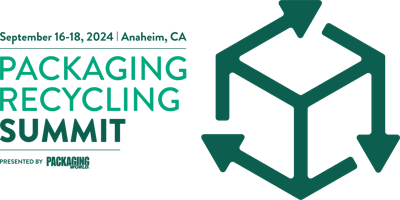
Annual Conference Unites Stakeholders
Join CPGs, retailers, material suppliers, MRFs, and reprocessors as they come together to better understand how they can collaborate to drive the circular economy for packaging through more efficient, profitable, and sustainable recycling at the 2024 Packaging Recycling Summit.



